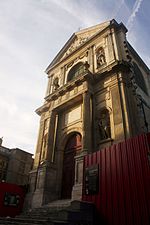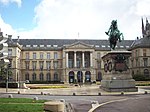Muséum d'Histoire Naturelle de Rouen

The Muséum d'Histoire Naturelle de Rouen (Natural History Museum) is a museum in Rouen, northern France, founded in 1828 by Félix Archimède Pouchet. Georges Pennetier was the second curator from 1873 to 1923, then Robert Régnier from 1924 to 1965. In October 2014, the museum of Rouen opened the Asian section of the gallery of the continents, the result of several years of cooperation with in particular Agus Koeciank and Jenny Lee, two Indonesian artists who have interpreted the Asian ethnographic collections of the museum of Rouen. It has been part of the Réunion des Musées Métropolitains Rouen Normandie since January 1, 2016. After the Muséum national d'histoire naturelle in Paris it is the second largest natural history museum in France. It preserves more than 500,000 objects from all over the world.
Excerpt from the Wikipedia article Muséum d'Histoire Naturelle de Rouen (License: CC BY-SA 3.0, Authors, Images).Muséum d'Histoire Naturelle de Rouen
Rue Beauvoisine, Rouen Quartier Vieux-Marché Cathédrale
Geographical coordinates (GPS) Address Phone number Website Nearby Places Show on map
Geographical coordinates (GPS)
| Latitude | Longitude |
|---|---|
| N 49.447083333333 ° | E 1.0993055555556 ° |
Address
Musée des antiquités de la Seine-Maritime
Rue Beauvoisine 198
76000 Rouen, Quartier Vieux-Marché Cathédrale
Normandy, France
Open on Google Maps









